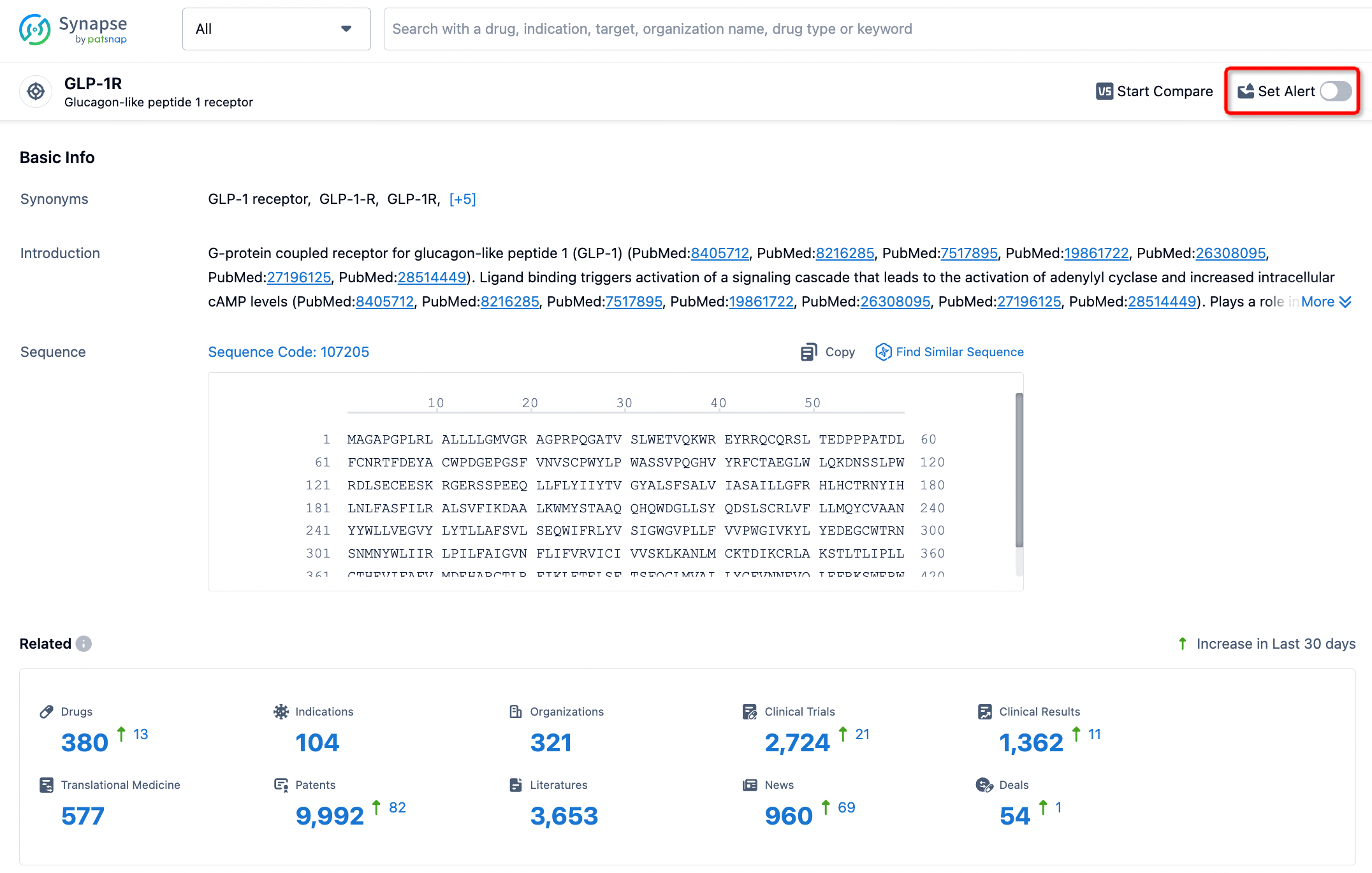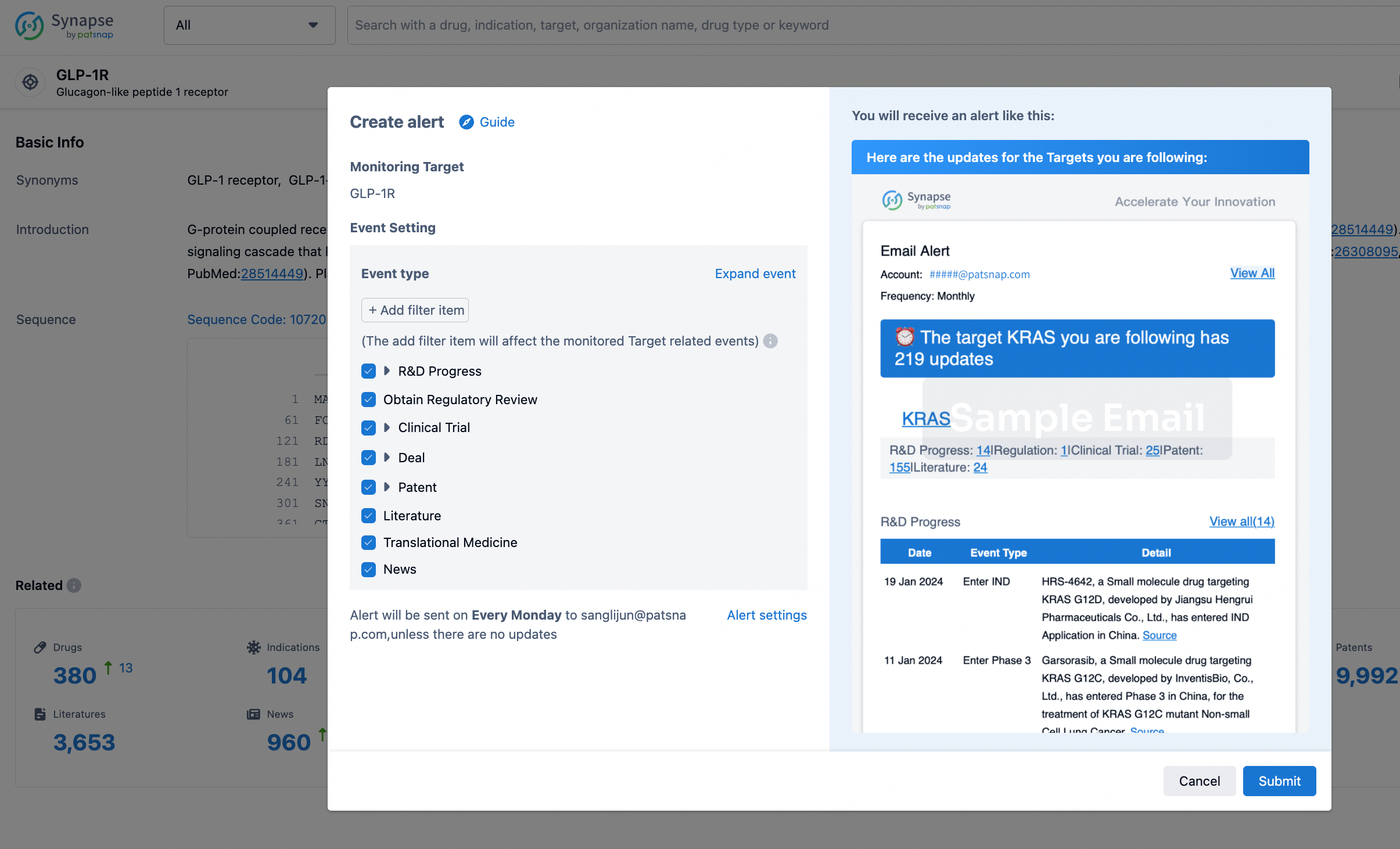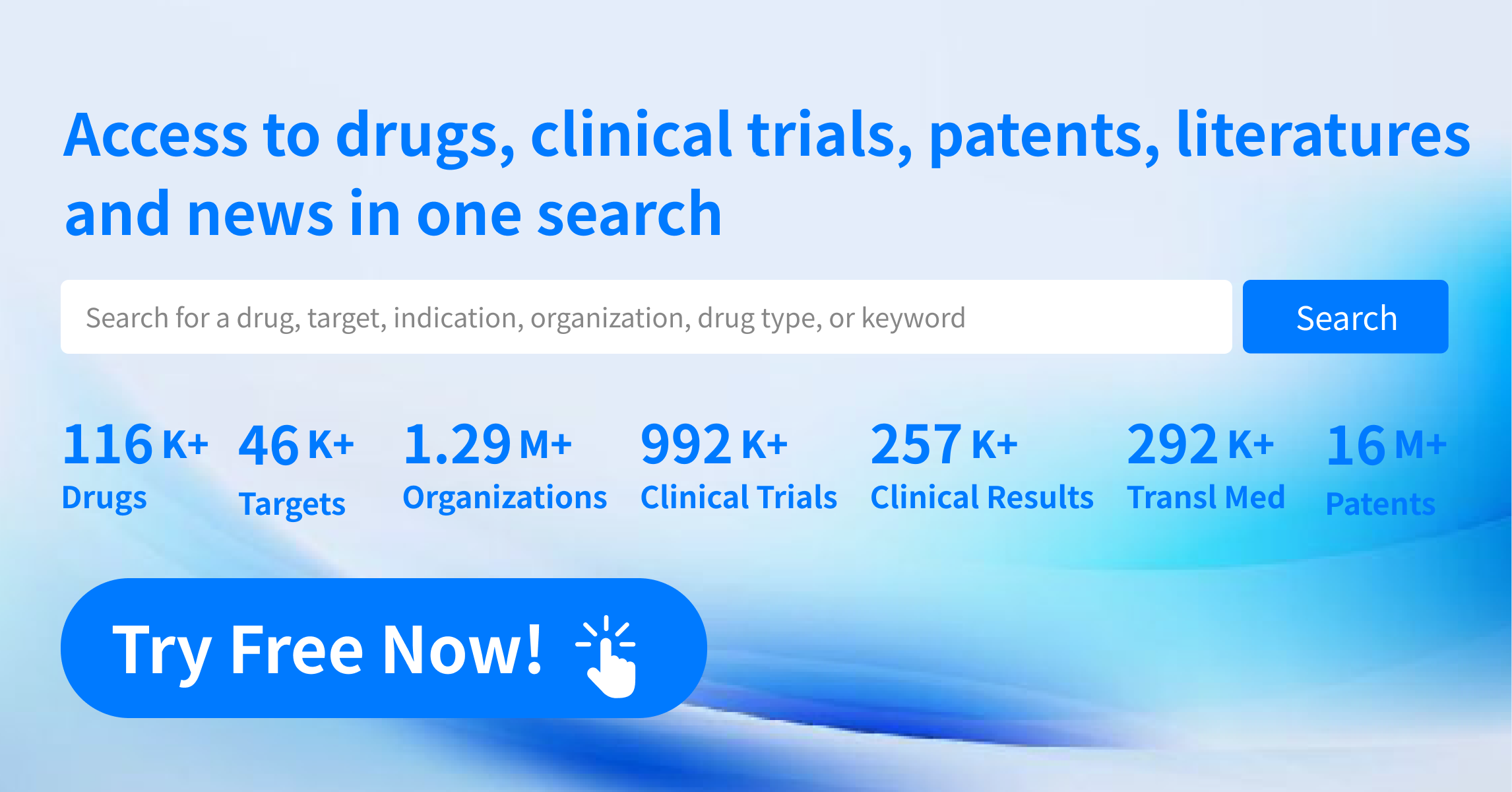Request Demo
What are 5-HT1F receptor agonists and how do they work?
21 June 2024
The 5-HT1F receptor is a lesser-known but increasingly important member of the serotonin receptor family. These receptors, primarily found in the brain, play a crucial role in regulating mood, cognition, and pain perception. 5-HT1F receptor agonists are a class of compounds that selectively bind to and activate these receptors. Over the past few years, scientific interest in these agonists has grown, especially regarding their potential therapeutic applications in treating various neurological and psychiatric conditions. This blog post delves into the mechanisms, functions, and possible medical uses of 5-HT1F receptor agonists.
5-HT1F receptor agonists function by selectively targeting the 5-HT1F receptors located in the brain. These receptors are part of the G-protein-coupled receptor family, which transduce extracellular signals into intracellular responses. When a 5-HT1F receptor agonist binds to its receptor, it activates a cascade of intracellular events that ultimately lead to the inhibition of adenylate cyclase activity. This inhibition decreases the levels of cyclic AMP (cAMP) within the cell, a secondary messenger involved in many cellular processes.
Moreover, 5-HT1F receptor activation inhibits the release of pro-inflammatory neuropeptides like CGRP (calcitonin gene-related peptide) and Substance P. These neuropeptides are associated with the transmission of pain and inflammation. By reducing their release, 5-HT1F receptor agonists can modulate pain pathways and potentially reduce inflammatory responses. Additionally, these agonists do not cause vasoconstriction, a significant concern with other serotonin receptor agonists, making them safer for patients with cardiovascular issues.
5-HT1F receptor agonists are primarily being investigated for their potential in treating migraine headaches. Migraines are a debilitating condition affecting millions of people worldwide, and current treatments often come with significant side effects. Traditional migraine medications like triptans target the 5-HT1B and 5-HT1D receptors, leading to vasoconstriction, which is not suitable for patients with cardiovascular diseases. In contrast, 5-HT1F receptor agonists offer a promising alternative, as they do not induce vasoconstriction and have shown efficacy in reducing migraine pain by modulating pain pathways and reducing inflammation.
Several clinical trials have demonstrated the efficacy of 5-HT1F receptor agonists in treating acute migraine attacks. Lasmiditan, one of the most studied 5-HT1F receptor agonists, has shown significant promise in reducing migraine symptoms. It has been approved by the FDA for the acute treatment of migraines in adults, offering a new option for patients who may not tolerate or respond to existing therapies.
Beyond migraines, there is a growing body of research suggesting that 5-HT1F receptor agonists could be beneficial in treating other conditions such as neuropathic pain and certain psychiatric disorders. Neuropathic pain, which arises from nerve damage, is notoriously difficult to treat with conventional analgesics. The ability of 5-HT1F receptor agonists to inhibit the release of pro-inflammatory neuropeptides offers a novel mechanism for pain relief, potentially providing relief for patients who suffer from chronic pain conditions.
There is also some preliminary evidence to suggest that 5-HT1F receptor agonists may have a role in treating anxiety and depression. Serotonin plays a pivotal role in mood regulation, and modulating specific serotonin receptors can influence mental health outcomes. However, more research is needed to fully understand the potential psychiatric applications of these agonists and to determine their safety and efficacy in long-term use.
In conclusion, 5-HT1F receptor agonists are an exciting area of research with significant potential for treating migraines and other conditions. Their unique mechanism of action, which avoids the vasoconstriction associated with other serotonin receptor agonists, makes them particularly promising for patients with cardiovascular concerns. As research progresses, it is likely that we will see a broader range of applications for these compounds, potentially offering new hope for patients with chronic pain and psychiatric disorders.
5-HT1F receptor agonists function by selectively targeting the 5-HT1F receptors located in the brain. These receptors are part of the G-protein-coupled receptor family, which transduce extracellular signals into intracellular responses. When a 5-HT1F receptor agonist binds to its receptor, it activates a cascade of intracellular events that ultimately lead to the inhibition of adenylate cyclase activity. This inhibition decreases the levels of cyclic AMP (cAMP) within the cell, a secondary messenger involved in many cellular processes.
Moreover, 5-HT1F receptor activation inhibits the release of pro-inflammatory neuropeptides like CGRP (calcitonin gene-related peptide) and Substance P. These neuropeptides are associated with the transmission of pain and inflammation. By reducing their release, 5-HT1F receptor agonists can modulate pain pathways and potentially reduce inflammatory responses. Additionally, these agonists do not cause vasoconstriction, a significant concern with other serotonin receptor agonists, making them safer for patients with cardiovascular issues.
5-HT1F receptor agonists are primarily being investigated for their potential in treating migraine headaches. Migraines are a debilitating condition affecting millions of people worldwide, and current treatments often come with significant side effects. Traditional migraine medications like triptans target the 5-HT1B and 5-HT1D receptors, leading to vasoconstriction, which is not suitable for patients with cardiovascular diseases. In contrast, 5-HT1F receptor agonists offer a promising alternative, as they do not induce vasoconstriction and have shown efficacy in reducing migraine pain by modulating pain pathways and reducing inflammation.
Several clinical trials have demonstrated the efficacy of 5-HT1F receptor agonists in treating acute migraine attacks. Lasmiditan, one of the most studied 5-HT1F receptor agonists, has shown significant promise in reducing migraine symptoms. It has been approved by the FDA for the acute treatment of migraines in adults, offering a new option for patients who may not tolerate or respond to existing therapies.
Beyond migraines, there is a growing body of research suggesting that 5-HT1F receptor agonists could be beneficial in treating other conditions such as neuropathic pain and certain psychiatric disorders. Neuropathic pain, which arises from nerve damage, is notoriously difficult to treat with conventional analgesics. The ability of 5-HT1F receptor agonists to inhibit the release of pro-inflammatory neuropeptides offers a novel mechanism for pain relief, potentially providing relief for patients who suffer from chronic pain conditions.
There is also some preliminary evidence to suggest that 5-HT1F receptor agonists may have a role in treating anxiety and depression. Serotonin plays a pivotal role in mood regulation, and modulating specific serotonin receptors can influence mental health outcomes. However, more research is needed to fully understand the potential psychiatric applications of these agonists and to determine their safety and efficacy in long-term use.
In conclusion, 5-HT1F receptor agonists are an exciting area of research with significant potential for treating migraines and other conditions. Their unique mechanism of action, which avoids the vasoconstriction associated with other serotonin receptor agonists, makes them particularly promising for patients with cardiovascular concerns. As research progresses, it is likely that we will see a broader range of applications for these compounds, potentially offering new hope for patients with chronic pain and psychiatric disorders.
How to obtain the latest development progress of all targets?
In the Synapse database, you can stay updated on the latest research and development advances of all targets. This service is accessible anytime and anywhere, with updates available daily or weekly. Use the "Set Alert" function to stay informed. Click on the image below to embark on a brand new journey of drug discovery!
AI Agents Built for Biopharma Breakthroughs
Accelerate discovery. Empower decisions. Transform outcomes.
Get started for free today!
Accelerate Strategic R&D decision making with Synapse, PatSnap’s AI-powered Connected Innovation Intelligence Platform Built for Life Sciences Professionals.
Start your data trial now!
Synapse data is also accessible to external entities via APIs or data packages. Empower better decisions with the latest in pharmaceutical intelligence.


